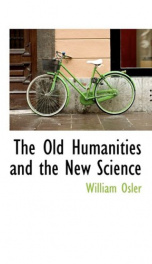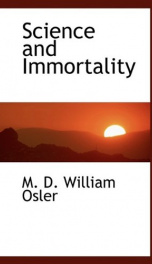Osler William

Sir William Osler, M.D.,C.M., 1st Baronet (July 12, 1849 – December 29, 1919) was a Canadian physician. (The "o" in "Osler" is pronounced like the "o" in "go".) He has been called one of the greatest icons of modern medicine and described as the Father of Modern Medicine. Osler was a pathologist, educator, bibliophile, historian, author, and renowned practical joker. Osler was born in Bond Head, Canada West (now Ontario), and raised after 1857 in Dundas, Ontario. His father, Featherstone Lake Osler (1805-1895), the son of a shipowner at Falmouth, Cornwall, was a former Lieutenant in the Royal Navy and served on H.M.S. Victory. In 1831 he was invited to serve on H.M.S. Beagle as the science officer on Charles Darwin's historic voyage to the Galápagos Islands, but he turned it down as his father was dying. As a teenager Featherstone Osler was aboard H.M.S. Sappho when it was nearly destroyed by Atlantic storms and left adrift for weeks. Serving in the Navy he was ship-wrecked off Barbados. In 1837 he retired from the Navy and emigrated to Canada, becoming a 'saddle-bag minister' in rural Upper Canada. On arriving in Canada he and his bride (Ellen Free Picton) were nearly ship-wrecked again on Egg Island in the Gulf of Saint Lawrence. William's great grandfather, Edward Osler, was variously described as either a merchant seaman or a pirate, and one of William's uncles, a medical officer in the Navy, wrote the Life of Lord Exmouth and the poem The Voyage. William was the brother of Britton Bath Osler and Sir Edmund Boyd Osler. Educated at Trinity College School, Port Hope, as a teenager, William Osler's aim was to follow his father into the Anglican ministry and to that end he entered Trinity College, Toronto (now part of University of Toronto) in the autumn of 1867. However, his chief interest proved to be medicine and, forsaking his original intention, he enrolled in the Toronto School of Medicine. This was a proprietary, or privately owned, institution, not to be confused with the Medical Faculty of the University of Toronto, which was then not active as a teaching body. After two years at the Toronto School of Medicine, Osler came to McGill University in Montreal where he obtained his medical degree (MD,CM) in 1872. Following post-graduate training in Europe, Osler returned to McGill University as a professor in 1874. It is here that he created the first formalized journal club. In 1884 he was appointed Chair of Clinical Medicine at the University of Pennsylvania in Philadelphia. When he left Philadelphia in 1889, his farewell address Aequanimitas is on the equanimity necessary for physicians. In 1889 he became the first chief of staff at Johns Hopkins Hospital, and in 1893 one of the first professors of medicine at Johns Hopkins University School of Medicine in Baltimore. In 1905 he was appointed to the Regius Chair of Medicine at Oxford, which he held until his death. He was also an Fellow of Christ Church, Oxford. Osler was created a baronet in the Coronation Honours List of 1911 for his many contributions to the field of medicine. Osler was a prolific author and a great collector of books and other material relevant to the history of medicine. He willed his library to McGill University where it forms the nucleus of McGill University's Osler Library of the History of Medicine, which opened in 1929. The printed and extensively annotated catalogue of this donation is entitled "Bibliotheca Osleriana: a catalogue of books illustrating the history of medicine and science, collected, arranged and annotated by Sir William Osler, Bt. and bequeathed to McGill University". Osler was a strong supporter of libraries and served on the library committees at most of the universities at which he taught and was a member of the Board of Curators of the Bodleian Library in Oxford. He was instrumental in founding the Medical Library Association in North America and served as its second President from 1901-1904. In Britain he was the first (and only) President of the Medical Library Association of Great Britain and Ireland[1] and also a President of the Bibliographical Society of London (1913).[2] Perhaps Osler's greatest contribution to medicine was to insist that students learned from seeing and talking to patients and the establishment of the medical residency. This latter idea spread across the English-speaking world and remains in place today in most teaching hospitals. Through this system, doctors in training make up much of a hospital's medical staff. The success of his residency system depended, in large part, on its pyramidal structure with many interns, fewer assistant residents and a single chief resident, who originally occupied that position for years. In 1889, Osler accepted the position of Physician-in-Chief at the recently founded Johns Hopkins Hospital in Baltimore. There, he quickly increased his reputation as clinician, humanitarian and teacher. He presided over a rapidly expanding domain. In the Hospital's first year of operation, when it had 220 beds, 788 patients were seen for a total of over 15,000 days of treatment. Sixteen years later, when Osler left for Oxford, over 4,200 patients were seen for a total of nearly 110,000 days of treatment. Soon after coming to Baltimore, Osler insisted that his medical students get to the bedside early in their training; by their third year they were taking patient histories, performing physicals and doing lab tests examining secretions, blood and excreta instead of sitting in a lecture hall, dutifully taking notes. He diminished the role of didactic lectures and once said he hoped his tombstone would say only, "He brought medical students into the wards for bedside teaching." He established a tradition at Hopkins that became the goal of those who succeeded him. He once said, "I desire no other epitaph … than the statement that I taught medical students in the wards, as I regard this as by far the most useful and important work I have been called upon to do." While at Hopkins, Osler also established the full-time, sleep-in residency system whereby staff physicians lived in the Administration Building of the Hospital. As established, the residency was open-ended, and long tenure was the rule. Doctors spent as long as seven or eight years as residents, during which time they led a restricted, almost monastic life. Osler's contribution to medical education of which he was proudest was his idea of clinical clerkships—having third and fourth year students work with patients on the wards. He pioneered the practice of bedside teaching making rounds with a handful of students, demonstrating what one student referred to as his method of "incomparably thorough physical examination." Osler is well known in the field of gerontology for the speech he gave when leaving Hopkins to become the Regius Professor of Medicine at Oxford. His speech "The Fixed Period", given on 22 February 1905, included some controversial words about old age. Osler, who had a well-developed humorous side to his character, was in his mid-fifties when he gave the speech and in it he mentioned Anthony Trollope's The Fixed Period (1882), which envisaged a College where men retired at 67 and after a contemplative period of a year were 'peacefully extinguished' by chloroform. He claimed that, "the effective, moving, vitalizing work of the world is done between the ages of twenty-five and forty" and it was downhill from then on. Osler's speech was covered by the popular press which headlined their reports with "Osler recommends chloroform at sixty". The Fixed Period speech is included in the book of his collected addresses, "Aequanimitas with other Addresses to Medical Students etc.") An inveterate prankster, he wrote several humorous pieces under the pseudonym "Egerton Yorrick Davis", even fooling the editors of the Philadelphia Medical News with a report on the supposed phenomenon of penis captivus.[3] He liked to say, "He who studies medicine without books sails an uncharted sea, but he who studies medicine without patients does not go to sea at all." He is also remembered for saying, "If you listen carefully to the patient they will tell you the diagnosis" which emphasises the importance of taking a good history. Throughout his life Osler was a great admirer of the 17th century physician and philosopher Sir Thomas Browne. In 1994 he was inducted into the Canadian Medical Hall of Fame. Osler was a prolific author and public speaker and his public speaking and writing were both done in a clear, lucid style. His most famous work, 'The Principles and Practice of Medicine' quickly became a bible to students and clinicians alike. It continued to be published in many editions until 2001 and was translated into many languages. (See Osler Library Studies in the History of Medicine vol. 8.A History of William Osler’s The Principles and Practice of Medicine by Richard Golden. ISBN 07717-0615-4. Available from the Osler Library.) Though his own textbook was a major influence in medicine for many years, Osler described Avicenna as the 'author of the most famous medical textbook ever written.' He noted that Avicenna's Canon of Medicine remained 'a medical bible for a longer time than any other work. [4] Osler's essays were important guides to physicians. The title of his most famous essay, Aequanimitas, espousing the importance of imperturbability, is the motto on the Osler family crest and is used on the Osler housestaff tie and scarf at Hopkins. He died, at the age of 70, in 1919, during the Spanish influenza epidemic; his wife, Grace, lived another nine years but succumbed to a series of strokes. Sir William and Lady Osler's ashes now rest in a niche within the Osler Library at McGill University. They had two sons, one of whom died shortly after birth. The other, Edward Revere Osler, was mortally wounded in combat in World War I at the age of 21, during the 3rd battle of Ypres (also known as the battle of Passchendaele). At the time of his death in August 1917, he was a Second Lieutenant in the (British) Royal Field Artillery; Lt. Osler's grave is in the Dozinghem Military Cemetery in West Flanders, Belgium. According to one biographer, Dr. Osler never recovered emotionally from the loss [5].
do you like this author?
What readers are saying
What do you think? Write your own comment on this book!
write a commentWhat readers are saying
What do you think? Write your own comment on this author!
write a commentBook list

The Evolution of Modern Medicine
A Series of Lectures Delivered at Yale University on the Silliman Foundation in April,1913
Series:
Unknown
Year:
Unknown
Raiting:
5/5
Show more
add to favoritesadd In favorites
Book list

The Evolution of Modern Medicine
A Series of Lectures Delivered at Yale University on the Silliman Foundation in April,1913
Series:
Unknown
Year:
Unknown
Raiting:
5/5
Show more
add to favoritesadd In favorites

the principles and practice of medicine designed for the use of practitioners a
Series:
Unknown
Year:
Unknown
Raiting:
5/5
Show more
add to favoritesadd In favorites

the principles and practice of medicine designed for the use of practitioners
Series:
Unknown
Year:
Unknown
Raiting:
4/5
Show more
add to favoritesadd In favorites

the old humanities and the new science
Series:
Unknown
Year:
Unknown
Raiting:
5/5
Many of the earliest books, particularly those dating back to the 1900s and before, are now extremely scarce and increasingly expensive. We are republishing these classic works in affordable, high quality, modern editions, using the original text and artwork. --This text refers to an alternate Paperback edition.
Show more
add to favoritesadd In favorites

the growth of truth as illustrated in the discovery of the circulation of the bl
Series:
Unknown
Year:
Unknown
Raiting:
5/5
Show more
add to favoritesadd In favorites

science and immortality
Series:
Unknown
Year:
Unknown
Raiting:
5/5
Many of the earliest books, particularly those dating back to the 1900s and before, are now extremely scarce and increasingly expensive. We are republishing these classic works in affordable, high quality, modern editions, using the original text and artwork.
Show more
add to favoritesadd In favorites

counsels and ideals from the writings of william osler
Series:
Unknown
Year:
Unknown
Raiting:
5/5
Originally published in 1906. This volume from the Cornell University Library's print collections was scanned on an APT BookScan and converted to JPG 2000 format by Kirtas Technologies. All titles scanned cover to cover and pages may include marks, notations and other marginalia present in the original volume.
Show more
add to favoritesadd In favorites

contributions to medical and biological research volume 2
Series:
Unknown
Year:
Unknown
Raiting:
4/5
Show more
add to favoritesadd In favorites

an alabama student and other biographical essays
Series:
Unknown
Year:
Unknown
Raiting:
4/5
Many of the earliest books, particularly those dating back to the 1900s and before, are now extremely scarce and increasingly expensive. We are republishing these classic works in affordable, high quality, modern editions, using the original text and artwork.
Show more
add to favoritesadd In favorites
What readers are saying
What do you think? Write your own comment on this author!
write a commentGenre
if you like Osler William try:
readers also enjoyed
What readers are saying
What do you think? Write your own comment on this author!
write a commentGenre
if you like Osler William try:
readers also enjoyed
Do you want to exchange books? It’s EASY!
Get registered and find other users who want to give their favourite books to good hands!





